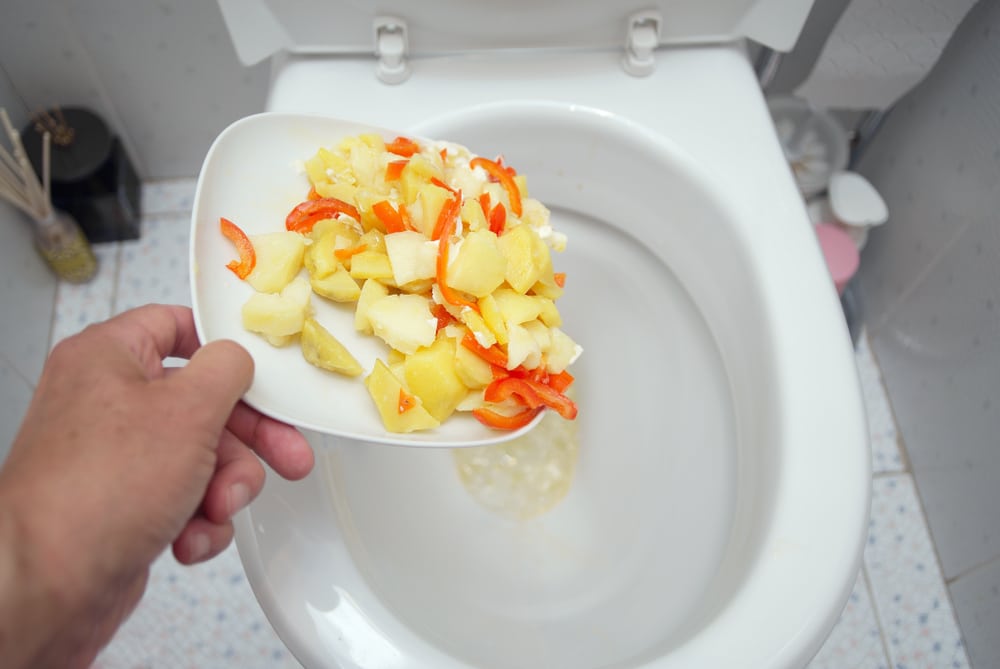The article further down involving Think Twice Before Flushing Food Down Your Toilet is really intriguing. Give it a go and draw your own personal conclusions.

Intro
Many individuals are commonly faced with the problem of what to do with food waste, specifically when it pertains to leftovers or scraps. One common question that develops is whether it's fine to flush food down the toilet. In this post, we'll explore the reasons that people may think about purging food, the effects of doing so, and alternate methods for appropriate disposal.
Reasons why people may take into consideration flushing food
Lack of understanding
Some individuals may not be aware of the potential harm triggered by flushing food down the toilet. They might incorrectly believe that it's a safe technique.
Benefit
Purging food down the commode may appear like a quick and very easy remedy to throwing away undesirable scraps, especially when there's no nearby trash can available.
Idleness
Sometimes, individuals might just choose to flush food out of sheer laziness, without thinking about the repercussions of their actions.
Consequences of flushing food down the commode
Ecological impact
Food waste that ends up in waterways can contribute to contamination and injury aquatic ecological communities. Furthermore, the water utilized to flush food can strain water sources.
Pipes problems
Purging food can lead to blocked pipes and drains, causing costly pipes repair work and troubles.
Kinds of food that should not be flushed
Coarse foods
Foods with fibrous structures such as celery or corn husks can get entangled in pipes and trigger blockages.
Starchy foods
Starchy foods like pasta and rice can absorb water and swell, bring about blockages in pipelines.
Oils and fats
Greasy foods like bacon or food preparation oils ought to never be purged down the commode as they can solidify and cause clogs.
Correct disposal approaches for food waste
Utilizing a garbage disposal
For homes geared up with waste disposal unit, food scraps can be ground up and flushed with the pipes system. Nonetheless, not all foods are suitable for disposal in this fashion.
Recycling
Particular food product packaging materials can be recycled, minimizing waste and decreasing environmental effect.
Composting
Composting is an environmentally friendly method to throw away food waste. Organic products can be composted and utilized to enrich soil for gardening.
The importance of correct waste monitoring
Lowering ecological damage
Appropriate waste management methods, such as composting and recycling, aid lessen pollution and protect natural deposits for future generations.
Securing pipes systems
By avoiding the method of flushing food down the commode, house owners can avoid expensive plumbing fixings and maintain the honesty of their pipes systems.
Verdict
Finally, while it might be appealing to purge food down the toilet for ease, it is very important to recognize the possible effects of this activity. By taking on proper waste monitoring practices and disposing of food waste responsibly, people can contribute to much healthier plumbing systems and a cleaner atmosphere for all.
FLUSH FOOD DOWN THE TOILET?
FLUSHING FOOD CAN CAUSE BLOCKED DRAINS IN YOUR HOME
All of the plumbing fixtures in your home are connected to the same sewer pipe outside of your home. This outdoor sewer pipe is responsible for transporting all the wastewater from your home to the Council sewer mains. Even small pieces of food that go down the kitchen sink can cause problems for your sewer. It should therefore be obvious that flushing larger bits of food, such as meat, risks a clog in either the toilet itself or the sewer pipes. Flushing greasy food is even more problematic because oil coagulates when it cools, coating the interior lining of your pipes.
THE TOILET IS NOT A BIN
Food isn’t the only thing that people shouldn’t be flushing down the toilet. People use the toilet to dispose of all kinds of things such as tampons, makeup wipes, dental floss, kitty litter and even underwear. Water goes to great lengths to educate residents about the high costs and stress placed on wastewater treatment systems simply from people flushing the wrong stuff down the toilet. It costs taxpayers millions of dollars each year, and homeowners thousands in blocked drain repairs.
FLUSHING FOOD IS A WASTE OF WATER
Flushing food is a waste of our most precious resource - water. In June this year Level 1 water restrictions were introduced to protect water supply from drought conditions. Much of New South Wales continues to be affected by prolonged drought with recent figures revealing up to 97 per cent of the state remains in drought. Depending on whether you have a single or dual flush toilet, every single flush uses between five and 11 litres of water. In the current climate this is a huge amount of water to be wasting on flushing food that should be placed in the bin (or better yet, the compost).
https://www.jabplumbingsolutions.com.au/blog/can-you-flush-food-down-the-toilet

I'm certainly very intrigued by What Can Happen If You Flush Food Down the Toilet? and I'm hoping you enjoyed our blog post. You should take a moment to share this entry if you enjoyed reading it. I recognize the value of reading our article about What Can Happen If You Flush Food Down the Toilet?.
Book An Estimate Now
Comments on “Is it Allowed to Flush Food in the Toilet?”